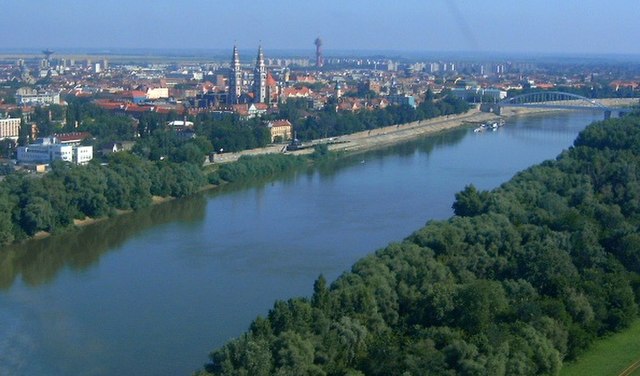The Danube is conventionally taken to be formed by the confluence of the two streams Brigach and Breg just east of Donaueschingen.
The source of the Donaubach, which flows into the Danube, in the park of Donaueschingen Palace is often referred to as the source of the Danube (Donauquelle). Hydrologically, the source of the Danube is the source of the Breg as the larger of the two formative streams which rises near Furtwangen.
Donauquelle in Donaueschingen
Donauquelle near Furtwangen
The Danube is the second-longest river in Europe, after the Volga in Russia. It flows through Central and Southeastern Europe, from the Black Forest south into the Black Sea. A large and historically important river, it was once a frontier of the Roman Empire. In the 21st century, it connects ten European countries, running through their territories or marking a border. Originating in Germany, the Danube flows southeast for 2,850 km (1,770 mi), passing through or bordering Austria, Slovakia, Hungary, Croatia, Serbia, Romania, Bulgaria, Moldova, and Ukraine. Among the many cities on the river are four national capitals: Vienna, Bratislava, Budapest, and Belgrade. Its drainage basin amounts to 817,000 km² and extends into nine more countries.
The Danube in Budapest
The hydrogeographical source of the Danube at St. Martin's Chapel in Furtwangen im Schwarzwald: the Bregquelle, the source of the Danube's longest headstream, the Breg, where the Danube is symbolized by the Roman allegory for the river, Danuvius.
The symbolical source of the Danube in Donaueschingen: the source of the Donaubach (Danube Brook), which flows into the Brigach.
The Tisza is the longest tributary of the Danube.






